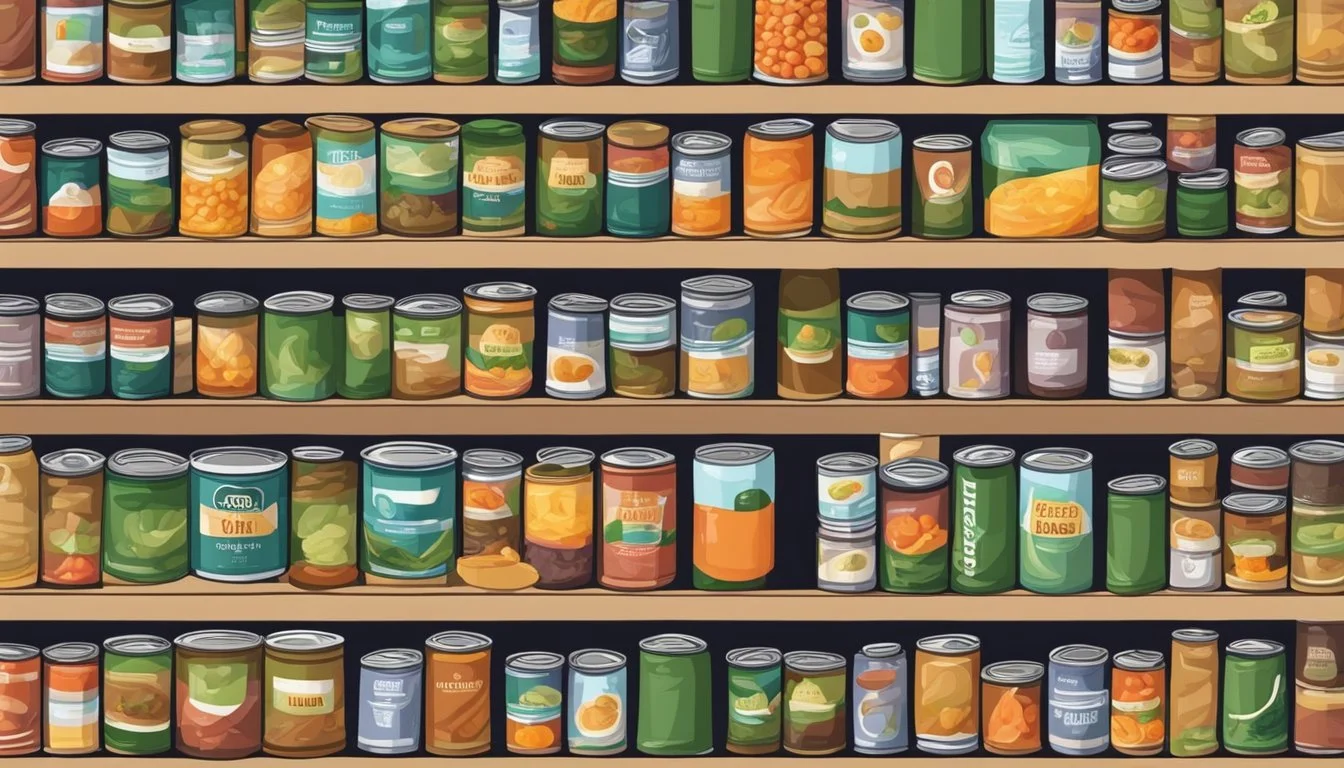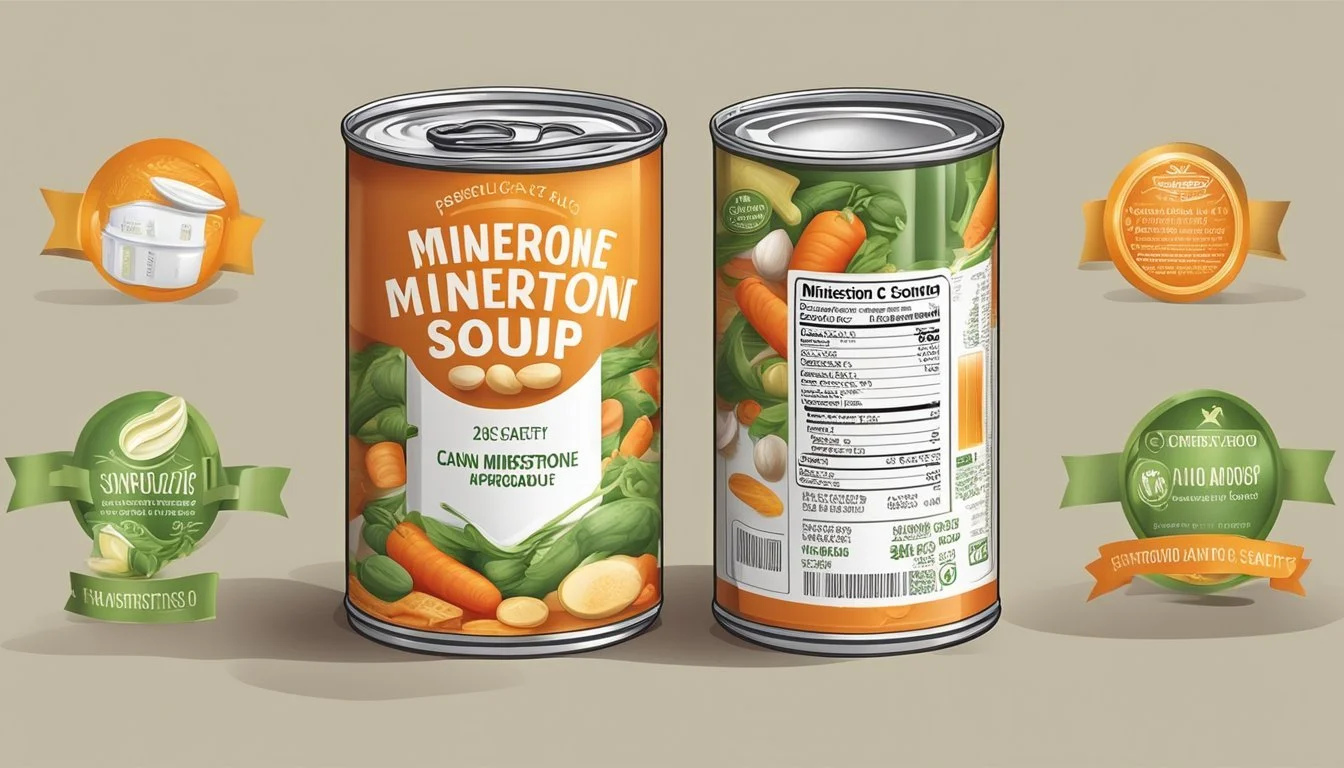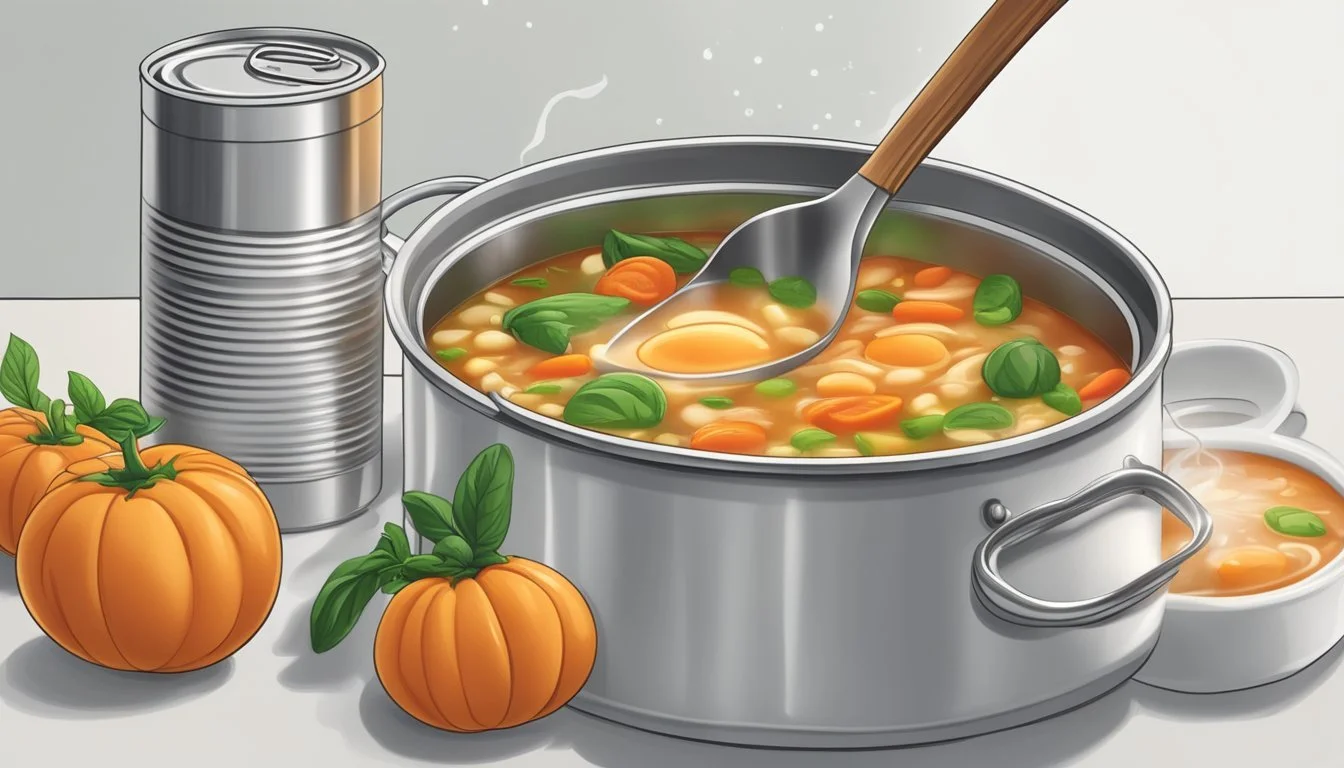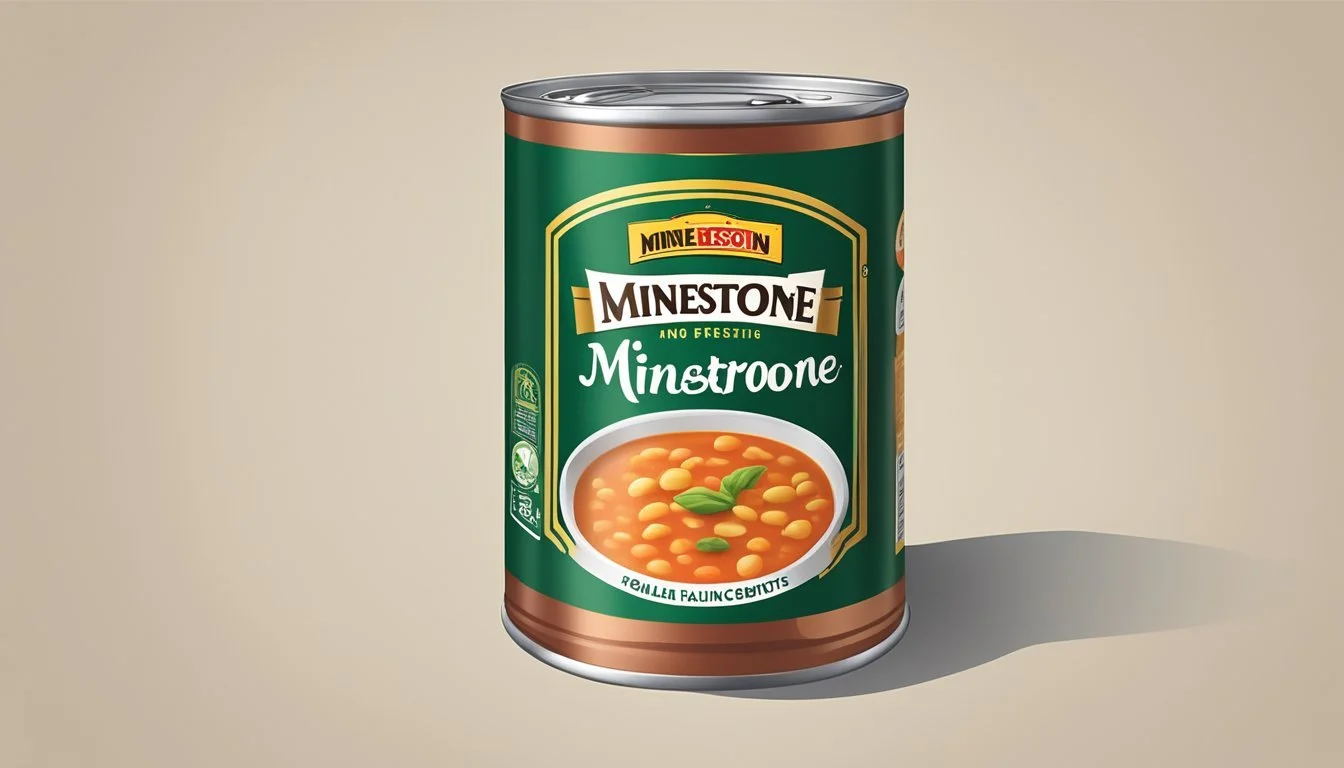Does Canned Minestrone Soup Expire?
Shelf Life and Storage Tips
Canned minestrone soup is a staple in many pantries, offering convenience and a comforting meal option. Yes, canned minestrone soup does expire, but it typically remains safe and of good quality for years beyond its printed expiration or best-by date. These dates primarily indicate peak quality rather than safety.
Consumers often wonder about the true lifespan of their canned goods and whether it's still safe to consume them past the listed date. While the quality of the soup may gradually decline, the safety is generally not compromised if the can remains intact without any signs of damage or leaks.
It's important to store canned minestrone soup in a cool, dry place to maintain its taste, texture, and nutritional value. Regularly checking your pantry and rotating older cans to the front ensures you enjoy the best possible flavor from your canned soups.
Understanding Canned Food Shelf Life
Canned foods, including minestrone soup, can last a considerable amount of time under proper storage conditions. It's important to understand both the shelf life and factors that can influence it, such as temperature and packaging quality.
Shelf Life and Expiration Dates
Canned goods, such as minestrone soup, typically have a shelf life of 2 to 5 years.
The "expiration date" often refers to the manufacturer's estimate of when the food will be at its best quality. Labels like "best before," "best by," or "best if used by" indicate this period. However, commercially packaged foods can remain safe to eat long after these dates, provided the cans are undamaged and stored properly.
Sealed and unopened cans should be kept in a cool, dry place, ideally at a consistent temperature between 50°F and 70°F, to maintain the integrity and longevity of the food inside.
Factors Affecting Shelf Life
The longevity of shelf-stable foods like canned minestrone soup can be influenced by several factors. Storage conditions play a crucial role; cans should be kept away from heat sources and direct sunlight to avoid temperature fluctuations.
Low-acid foods (e.g., meats, vegetables) generally have a longer shelf life compared to high-acid foods (e.g., tomatoes, fruits). Damages to cans, such as dents, rust, or swelling, can compromise safety and lead to spoilage. Humidity should be kept low to prevent corrosion of the cans.
Monitoring these factors ensures that the canned goods remain safe and enjoyable to consume even beyond the given dates.
Signs of Spoilage in Canned Foods
Detecting spoilage in canned foods is crucial to avoid foodborne illness. Key indicators include changes in appearance, smell, taste, and texture.
Visual Inspection
Examine the can for any physical damage such as bulging, rust, or dents. A bulging can often signals bacterial growth, which can be dangerous. Look for leaks or spills around the can’s seams as these can indicate a breach in the seal.
Open the can and inspect the contents. Any discoloration, unexpected color changes, or the presence of mold are clear signs that the food should be discarded. Vegetables, beans, meat, and pasta that look strange or off-color should be thrown away immediately.
Smell and Taste Assessment
Smell is a strong indicator of spoilage. If the food inside the can emits any off odor or unusual smell, it should not be consumed. This can include sour smells, rotten odors, or anything that seems abnormal.
Though tasting is less recommended for initial checks, a small sample may confirm spoilage. Be cautious; a bad flavor indicates that the food has gone bad and it should be discarded to prevent foodborne illness.
Texture and Consistency
The texture and consistency of canned food can also reveal spoilage. If the texture is mushy, slimy, or otherwise different from what is expected, the food is likely bad. For soups like minestrone, the consistency should be even and smooth.
Any change, such as the pasta becoming overly soft or the beans disintegrating, signals spoilage. Presence of mold, especially in soups, should result in immediate disposal. Always prioritize safety and discard questionable canned goods.
Proper Storage Methods
To ensure the best quality and safety of canned minestrone soup, it’s essential to follow proper storage methods both before and after opening. Key factors include maintaining the right storage conditions and temperature.
Before Opening
Unopened cans of minestrone soup should be kept in a cool, dry place. The pantry is ideal as it keeps the cans away from direct sunlight and heat sources. For optimal storage, the temperature should be consistent and preferably between 50°F and 70°F.
Avoid areas prone to temperature fluctuations such as garages or near ovens. Regularly check the cans for any signs of bulging, rust, or leakage, which indicate compromised integrity and potential contamination. Proper storage can help maintain the soup’s best quality for approximately 2-5 years.
After Opening
Once the can is opened, transfer any unused soup to an airtight container to prevent contamination and spoilage. Store the container in the refrigerator where the temperature is maintained at or below 40°F.
Consume refrigerated minestrone soup within 3-4 days for the best quality and safety. If the soup contains meat or dairy, it is advisable to eat it within 1-2 days. Reheat the soup thoroughly to an internal temperature of at least 165°F before consuming any leftovers. Proper handling ensures the soup remains safe and enjoyable to eat.
Safety and Quality Considerations
Canned minestrone soup has a long shelf life, but quality and safety can vary based on storage conditions and the condition of the can. Understanding these factors is essential to ensure both health and enjoyment.
Food Safety Guidelines
Storage Conditions: Canned goods should be stored in a cool, dark place with temperatures between 50°F and 70°F. Consistent temperature helps maintain the food's quality and safety.
Inspect the Can: Before consumption, inspect canned minestrone soup for rusting, severe dents, or swelling. These conditions may indicate compromised container integrity, leading to potential health risks.
Expiration Dates: While expired canned soup can often be safe to consume, its quality may diminish. Generally, unopened canned soup remains safe for 2-5 years if stored correctly, but always check for damage or off smells.
USDA Recommendations: Follow guidelines from the USDA on canned food storage and safety, including never consuming cans with bulges, rust, or severe dents.
Signs of Spoilage: Look for signs the soup has gone bad such as bad odor, discoloration, or unusual texture. These signs indicate spoilage and potential health risks. Always err on the side of caution and dispose of any suspect cans.
Maximizing Soup Enjoyment
To fully appreciate canned minestrone soup, consider optimal consumption strategies and creative uses to elevate your dining experience.
Optimal Consumption
For peak quality, check the expiration date and store unopened cans in a cool, dry place away from direct sunlight and heat sources. Once opened, transfer any leftovers to a fridge in an airtight container.
Best quality flavor is typically achieved when the soup is consumed within 3-4 days if refrigerated. For longer storage, use freezer-safe containers and store for up to 2-3 months. When reheating, use a microwave or slow cooker to maintain its hearty texture. Ensuring the soup is heated evenly will preserve the taste and texture.
Creative Uses
Canned minestrone soup can be a healthy and convenient base for various dishes. Enhance the soup by adding fresh vegetables, such as spinach or zucchini, or proteins like cooked chicken or beans.
For a hearty meal, serve the soup over cooked grains like quinoa or rice. Transform leftovers into a unique dish by integrating them into a pasta bake or stew. Freeze individual portions for a quick, balanced meal option that can be reheated with minimal effort.
Canned Minestrone Soup Specifics
Canned minestrone soup has certain characteristics that set it apart from other canned soups. Understanding its unique components and proper storage methods is essential for ensuring its safety and quality.
Unique Components of Minestrone
Minestrone soup is a hearty Italian soup featuring a variety of ingredients. This typically includes a mix of vegetables such as zucchini, carrots, tomatoes, and spinach. Beans, pasta, and sometimes meat like ground beef or sausage are also common.
The combination of vegetables and pasta gives minestrone its signature thickness. High natural acidity from canned tomatoes helps preserve it, making it suitable for long-term storage.
In the canned version, it often contains added preservatives to ensure a longer shelf life. No dairy is typically included in traditional minestrone, allowing it to remain shelf-stable without refrigeration until opened.
Storing Canned Minestrone Soup
Proper storage is key for maintaining the quality of canned minestrone soup. An unopened can should be stored in a cool, dry place like a pantry. When kept under optimal conditions, it can last for 2-5 years, though checking the expiration date is recommended.
Once opened, the soup should be transferred to a sealed container and refrigerated, where it will last for 3-4 days. Freezing minestrone soup is also an option, which extends its usability for several months, although pasta may become mushy upon reheating.
High acidity from the tomatoes helps in preserving the unopened soup, but storage recommendations should always be followed to ensure safety and quality.






